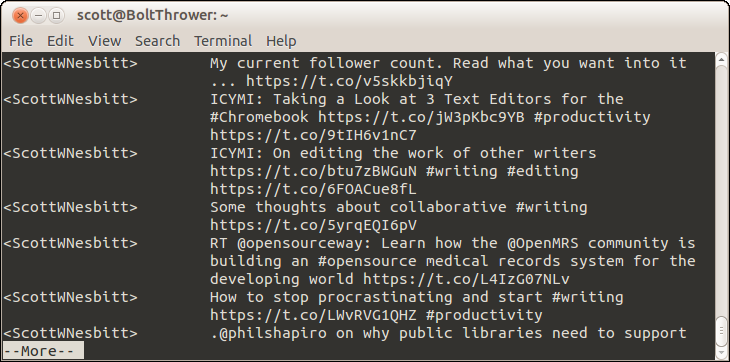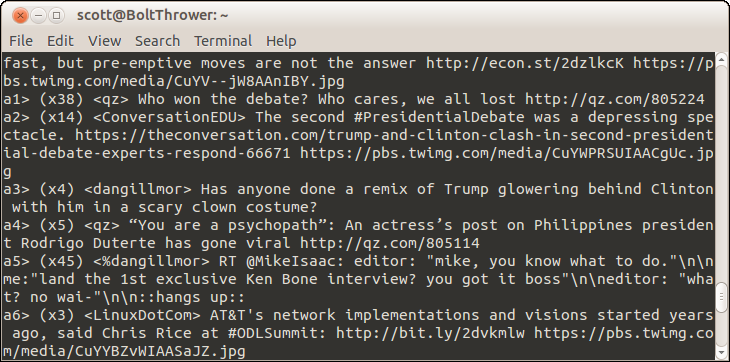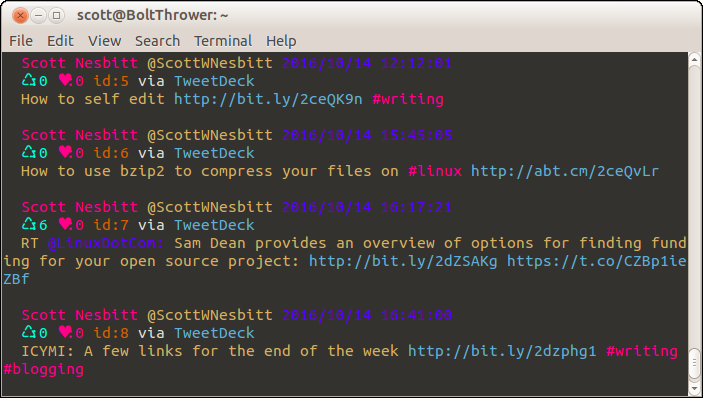Twitter at the command line? Why not!
While this may seem like a solution searching for a problem, for some people interacting with Twitter in a terminal window makes sense. There's less distraction at the command line than with a desktop Twitter client or even Twitter's web interface. On top of that, command-line clients are fast and their interfaces are generally quite clean.
No matter why you want to work with Twitter in a terminal, there are applications out there for you. Here's a look at three Twitter clients that you can run from the command line.
Twidge
Twidge is a simple but effective Twitter client. It lets you interact with your Twitter account in a number of ways, including reading and sending tweets and direct messages, replying and retweeting, and viewing a list of your own tweets. You can even tell Twidge to shorten URLs in your tweets by adding a couple of lines to its configuration file.

Twidge isn't interactive. Every time you want to do something, you need to run Twidge with an option. For example, type twidge update "My message" to post a tweet. If you can't remember an option, type twidge lscommands to get a list of options.
Twidge displays information in a very clean way. You get two columns, with a Twitter handle on the left and tweets or messages on the right.
Oysttyer
Oysttyer is a Perl script that packs a number of features into its 8,000+ lines. Unlike Twidge, it's interactive. When you fire up Oysttyer, it grabs your current timeline. Then, it waits for you to tell it what to do.

You do that by issuing one of Oysttyer's built-in commands that gives you an impressive level of control over how you interact with Twitter. Each command has a forward slash in front of it, like /refresh, to get the latest tweets in your timeline.
The forward slash is very important. Oysttyer considers anything that you type without a forward slash in front of it to be a tweet. If you don't include the slash with commands, you're going to leave some of your followers scratching their heads, as I found out!
Rainbow Stream
Rainbow Stream is probably the most visually appealing command-line Twitter client I've seen. It's not just a pretty face, though. Rainbow Stream can do just about everything a web-based or desktop Twitter client can.
Like what? Post and reply to tweets, send direct messages, view conversations, and block or mute people. You can even attach images to, and view them in, tweets (plus a whole lot more).

You can also customize the look and feel of Rainbow Stream. It has a number of themes, which change the colors of text and links. You can even change the format of how you quote tweets when replying or retweeting.
Do you have a favorite Twitter client for the Linux command line? Feel free to share it by leaving a comment.







10 Comments